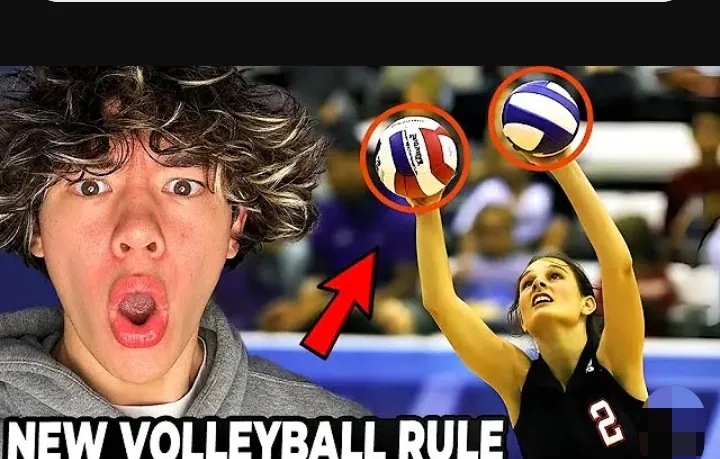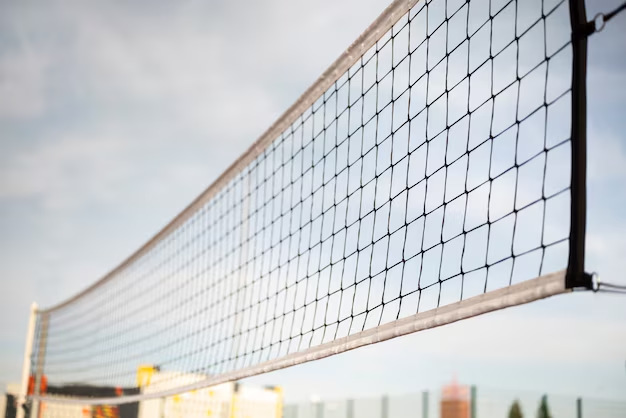New volleyball rules: volleyball, like any other sport, evolves with time. As new techniques, strategies, and safety concerns emerge, the rules of the game change to keep pace. In this article, we’ll look into the new volleyball rules, how they affect the game, and why you need to stay updated if you want to keep your skills sharp and your team competitive.
Sed Also: Kicking Ball Volleyball Rule: Can You Really Use Your Feet in Volleyball?
Overview of the New Volleyball Rules

Whether you’re a player, coach, or fan, understanding the new volleyball rules is essential. Recent rule changes focus on making the game faster, safer, and more enjoyable for both players and spectators.
The new volleyball rules for the 2024 season, as released by the FIVB (International Volleyball Federation), focus on improving the flow of the game, safety, and fairness. Here are some of the key updates:
- Libero Serving: The Libero, traditionally restricted from serving, is now allowed to serve in one rotation. This change aims to enhance team flexibility in both defense and serve rotations.
- Net Touches: Any contact with the net by a player remains a fault, but incidental contact when the ball is not near the net or during movement away from the action may not always be penalized. This focuses on intentional touches that do not affect the play.
- Time Between Points: The time between points has been slightly reduced to speed up the game. Teams are encouraged to reduce the duration of celebrations or resets between points.
- Video Challenge: Teams are allowed an unlimited number of video challenges, provided they are successful. However, once a challenge is unsuccessful, they lose one of their two initial challenges.
- Rotation Faults: In case of a rotational fault, the point will now be awarded directly to the opposing team. Previously, it resulted in a side-out.
- Timeout Adjustments: The length of team timeouts has been reduced from 60 seconds to 30 seconds. Technical timeouts during sets are also eliminated, except in major tournaments, where they may still apply.
- Serving Foot Fault: The new rule allows players to jump or step on the service line without committing a fault, provided they are in the air when making contact with the ball.
These updates may seem minor to some, but even a slight tweak can have a huge impact on gameplay.
For example, in the past few seasons, there have been adjustments in areas like serving, player rotations, and even how net violations are called. These changes can be the difference between winning or losing a point in crucial moments.
Scoring System Changes
One of the most significant new volleyball rules that affected gameplay in the past was the shift to rally point scoring. While the scoring system hasn’t changed recently, it’s worth noting that adjustments in how long a set lasts or how certain points are calculated could emerge in the future. Rally scoring, where every serve results in a point, speeds up matches but also adds pressure on players to avoid mistakes.
Imagine a tight game with both teams tied at 24-24. Every serve matters even more with this system, and a new rule affecting service faults could make or break a game.
See Also: Complete Guide to the Scoring System for Volleyball
Serve and Serve Reception Modifications
Recent new volleyball rules regarding serves and serve reception are meant to level the playing field. For instance, stricter regulations about where a player can stand during a serve and new guidelines on jump serves have been introduced. Players now need to be more aware of their foot positioning to avoid a service fault.
On the receiving end, changes in how a player can handle a serve have altered team dynamics.
The introduction of new guidelines on open-hand receptions means players must adjust their technique to avoid giving away easy points.
Blocking and Attacking Rules
Blocking and attacking remain critical parts of volleyball strategy, but some new volleyball rules affect how these actions are performed. For example, recent updates allow blockers to contact the ball over the net more aggressively, but only if the ball is still in the opponent’s side during an attack.
Imagine being a middle blocker, jumping up for a block, but now needing to carefully time your hand movements to avoid touching the ball too early. These rule tweaks force players to refine their timing and anticipation, making volleyball even more of a mental game.
Net and Line Violations
Under the new volleyball rules, net violations are being called more strictly. In the past, a slight brush of the net might have been overlooked, but now, any contact with the net results in a violation. This rule is designed to prevent injuries and maintain fair play, but it means players must exercise more control during high-intensity plays near the net.
The same goes for line violations. The new volleyball rules emphasize stricter monitoring of foot positioning, especially for back-row players attacking from behind the three-meter line. A misstep could result in losing a point for your team, even in a moment of excitement.
How to Adapt to the New Volleyball Rules
It’s not just professional players who need to worry about these rule changes—recreational and amateur players should also pay attention. Adjusting to the new volleyball rules requires training, practice, and awareness. Coaches should incorporate these rules into drills, especially focusing on footwork for serves and net play to avoid costly mistakes.
FAQs
What are the major new volleyball rules introduced recently?
The most notable new volleyball rules include stricter guidelines on serving and receiving, more stringent net violation calls, and updated regulations on blocking. For example, players must be more mindful of foot placement during serves and attacks. Additionally, new rules regarding open-hand receptions have impacted how players receive powerful serves.
2. Why are the new volleyball rules important?
The new volleyball rules are crucial because they aim to improve safety, fairness, and the flow of the game. These changes help to create a more exciting, fast-paced experience for players and fans alike. By staying updated, you can avoid penalties, improve your performance, and stay competitive.
3. How do the new volleyball rules impact professional players?
Professional players must adapt quickly to the new volleyball rules, as even small changes can alter game dynamics. These players often practice the updated rules in their training sessions to ensure they don’t make errors during important matches. For instance, stricter net violation calls can change the way players approach the net for blocks and attacks.
4. How can I stay updated on new volleyball rules?
To stay updated on new volleyball rules, follow official governing bodies like the FIVB (International Volleyball Federation) and NCAA (National Collegiate Athletic Association). They regularly publish updates to their rulebooks. You can also subscribe to volleyball news websites or download apps that provide real-time updates on rule changes.
5. Are the new volleyball rules the same for beach volleyball?
While there are some similarities between indoor and beach volleyball, each version of the sport has its own set of rules. The new volleyball rules for beach volleyball focus on different aspects like court dimensions, number of players, and how weather conditions affect play. It’s important to know the specific rules for the type of volleyball you’re playing.
Understanding the new volleyball rules will help you play smarter and avoid costly penalties. Whether you’re on a recreational team or competing professionally, keeping up with these changes is crucial for improving your game.




